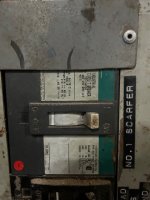Not necessarily much for explosion events though. Housekeeping activities are possibly a major factor in whether such a facility may need to consider calling it a classified location. Fine airborne dust is what is explosive in nature and is even more so when in an enclosed space as the pressure of rapid combustion is what blows the enclosure out. There is also the possibility of igniting the layer of material that accumulates on heat producing items but a routine housekeeping schedule does help minimize this. At very least there isn't as much accumulation to ignite when you do have an incident. It doesn't need to be electrical items that are the source of ignition, bad bearing on a machine or something similar can do this as well. Many grain elevator explosions (I have more first hand experiences with those applications than sawmills) occurred because of some mechanical failure like a bad bearing in some piece of equipment and the resulting heat was the ignition source.

